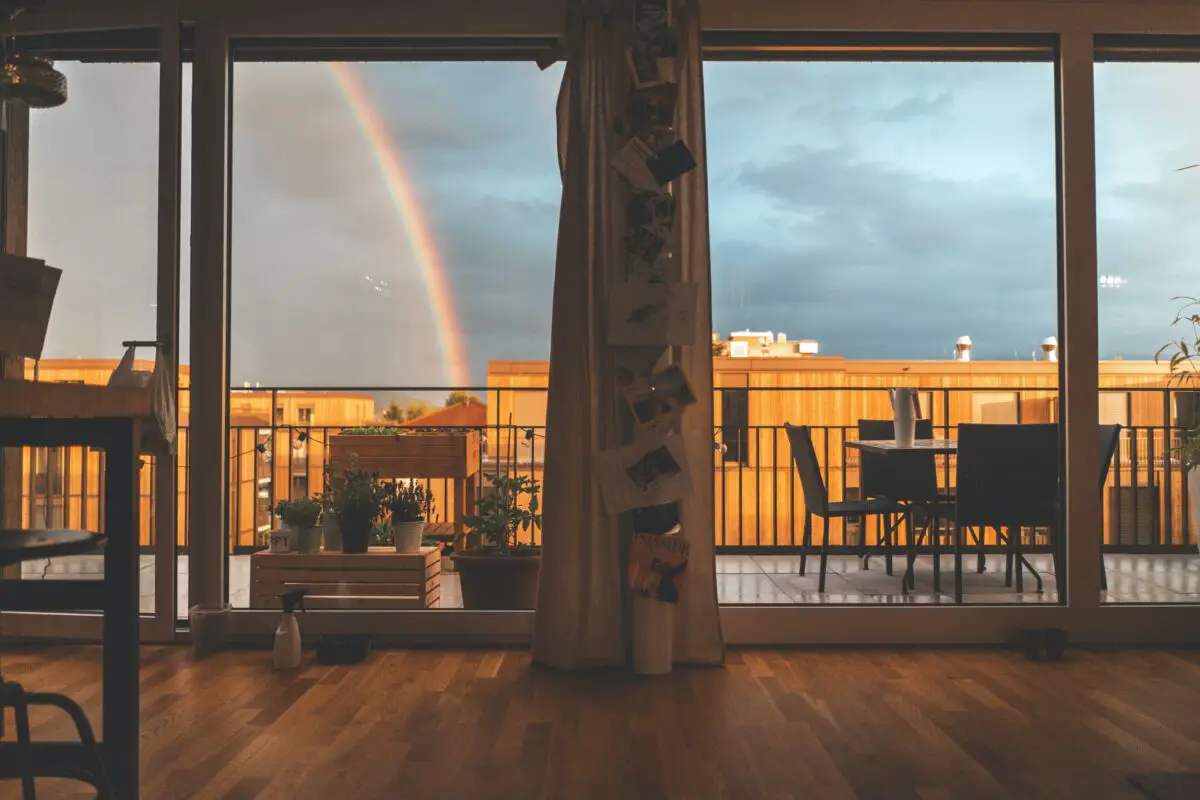Between 2014-2018, homeowners claimed over $10,000 in water damage on average. Often, the leaks in second-floor balconies and roofs are responsible for this damage. Fortunately, waterproofing your balcony isn’t hard.
To water waterproof a second-floor balcony, you first need to examine its condition. After that, prepare the surface for waterproofing, and once the surface is ready, seal up the cracks and holes. Finally, apply two coats of a waterproofing membrane to finish the process.
That said, the process of waterproofing requires attention to detail. You need to know how and when to use a certain product. Therefore, keep reading as I’ll explain the ins and outs of the process in detail down below.
1. Examine the Condition of the Balcony
The first step in waterproofing a balcony is to examine its condition. Often, people skip this step and start to waterproof the balcony. And because they don’t know the extent of the wear and tear, they can’t plan a sound strategy against it.
As a result, when you don’t plan well enough, you will end up spending more money in the future. For instance, if you notice efflorescence, then it is a clear sign of a leak. The leak can be on the balcony or the roof.
So, evaluate the condition of the balcony first. Look for things like cracks in the substrate and mold. While the cracks are easy to spot, the mold may not be. It is common for mold to grow in places that are not visible.
So, how do you identify mold?
Well, to identify mold, look for the following:
- Visible spots. If you can see visible mold spores, then it can mean that the mold has spread throughout your house.
- Leaks in the roof. If there are leaks in the roof of your house, then a mold growth is likely.
- Musty or Damp Smell. Mold has a distinct smell that resembles rotting wood.
- Breathing Issues. Mold spores can become airborne and, therefore, can cause an allergic reaction.
- Constant, worsening headaches. Among many health issues associated with mold are persistent headaches that get worse.
- Damp/Soft Tiles in the ceiling. Mold can ruin tile from the inside through moisture buildup.
In the end, if you spot any of these signs in your house, call a professional. Getting rid of mold isn’t easy, and the more time you waste, the worse the problem becomes.
Similarly, if there are cracks in the surface, you need to fix them before waterproofing your balcony. Waterproofing the balcony without fixing the cracks will not solve the problem, because sooner or later the waterproofing will fail.
Additionally, check the slope of your balcony. Fix your eyesight parallel to the surface, and see if the surface gently slopes towards the drain. If it doesn’t, and you live in an area with frequent rainfall, then a re-tiling is in order.
2. Prepare the Surface for Waterproofing
Next up, prepare the surface for waterproofing. To do this, ensure that the surface of the balcony is clean. Get rid of any dirt and debris you find. You can either vacuum or wash the surface and let it dry before moving on.
Remember this: Dirt is your enemy when it comes to applying a consistent layer of waterproof membrane.
Dirt won’t let the membrane bond properly to the surface. The primer layer needs a clean surface to stick to. If the surface is not clean or has rust, the primer won’t adhere properly and will be unable to create a smooth surface. A rough surface results in a poor bond between
So be sure to clean the dirt, as it can save you both time and money.
3. Fill Cracks and Joints With Polyurethane Sealant
The next step in waterproofing your second-floor balcony is to fill the cracks and seal the joints. To do this, you need a polyurethane sealant, Loctite PL Premium is a great one, and a concrete/mortar cement-like Dap Pre-Mixed Concrete Patch.
Now, use the polyurethane sealant to fill small cracks in the surface. Similarly, also apply the sealant to the joints between the walls and the surface. Make sure that you have covered all the small cracks with the sealant before moving on.
After the application of the sealant, wait at least 24 hours before applying anything else. This also holds for quick-drying sealants. However, you can apply another layer of the sealant after about 6 hours if you wish to do so.
Finally, fill the big cracks and chips with mortar or cement. And let the concrete dry. Most pre-mixed concrete patches dry within 24 hours and take about two days to fully cure. So, wait at least 24 hours before applying the primer.
4. Apply a Layer of Primer
After you have prepared the surface, it is time to apply a primer like KILZ Premium Latex Primer. This is a step you shouldn’t skip.
First up, mix the primer thoroughly to homogenize the mixture. After that, use a brush or a roller to apply the primer evenly over the surface of the balcony. Once you complete the first layer, let it dry.
Next up, apply the second layer after about an hour.
Finally, give both layers a minimum of 3 hours to dry. The primer may be dry to the touch after an hour, but that doesn’t mean it is ready for overcoating. Don’t coat over a primer while it is still wet. If you do this, not only will the coat not stick, but it will also ruin the primer layer.
5. Apply a Layer of Waterproofing Membrane
Filling the cracks with a polyurethane sealant helps keep the moisture out. But the sealant isn’t enough on its own. Your second-floor balcony needs a final waterproofing layer to be watertight. This is where a waterproofing membrane comes in.
To do this, you will need two things:
- A liquid waterproofing membrane like USG Durock Liquid Waterproofing Membrane.
- A PVC/Mesh waterproofing membrane such as Laticrete Waterproofing Membrane Fabric.
First up, cut the PVC/Mesh waterproofing membrane into strips to be placed along the joints. Apply a layer of a liquid waterproofing membrane. While the layer is still wet, place the mesh strips over this layer, along the joints. Then, apply a second layer over the strips, and seal them in place.
Finally, do the above for all the joints and seams on your balcony.
6. Apply the Finishing Layer
The last thing you need is one final layer of the liquid waterproofing membrane. Use a brush or a roller to apply the layer over the entire surface of your balcony.
While applying this second layer, pay attention to joints and the edges of drains. The edges are vulnerable to water damage. Therefore, cover the edges of drains with mesh tape, and then apply the second layer over them.
Let this layer dry, and you will have a watertight second-floor balcony.
Conclusion
Waterproofing a balcony is critical to maintaining the structural integrity of your house. Ideally, you need a professional handling it for you. That is not to say that you can’t do it yourself. You can waterproof a balcony if you know what to use and how to use it.
That said, the most important part of waterproofing is identifying problems. For instance, if you can see efflorescence on the walls, it can be the result of roof leakage.
So, while examining the balcony, it is always a good idea to evaluate other areas of the house as well.

